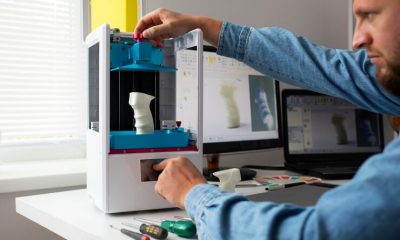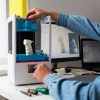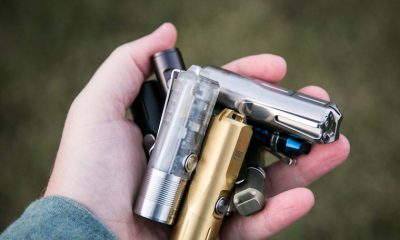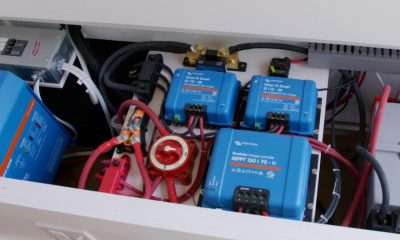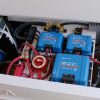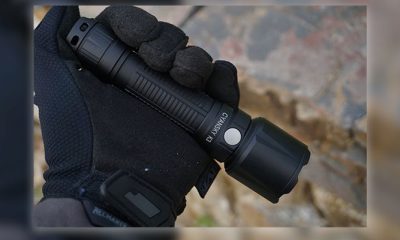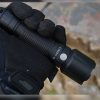Electronics
Lithium-Ion Batteries: What Makes Them Superior and Choosing the Ideal Battery for Your Application
Although solar panels are the unmistakable symbol of going off the grid, lithium ion storage batteries are its irreplaceable heart. And with the evolution of new deep cycle storage solutions for everything from RVs to yachts, they’re the reason that solar power has become so beneficial.
Low maintenance deep cycle storage simplifies the reliable renewable energy picture. It demands only that a battery be capable of regularly discharging as much as 70% – 80% of its capacity without adversely affecting its ability to recharge, and lithium batteries do that better than any other.
That’s just one aspect of what lithium batteries are capable of, though. They’re the future of energy storage, and you can get the whole story here behind why they’re so good at what they do, and what else they have to offer if you’re thinking about going off the grid.
All the Reasons Why Lithium-ion Batteries are Superior at Storage
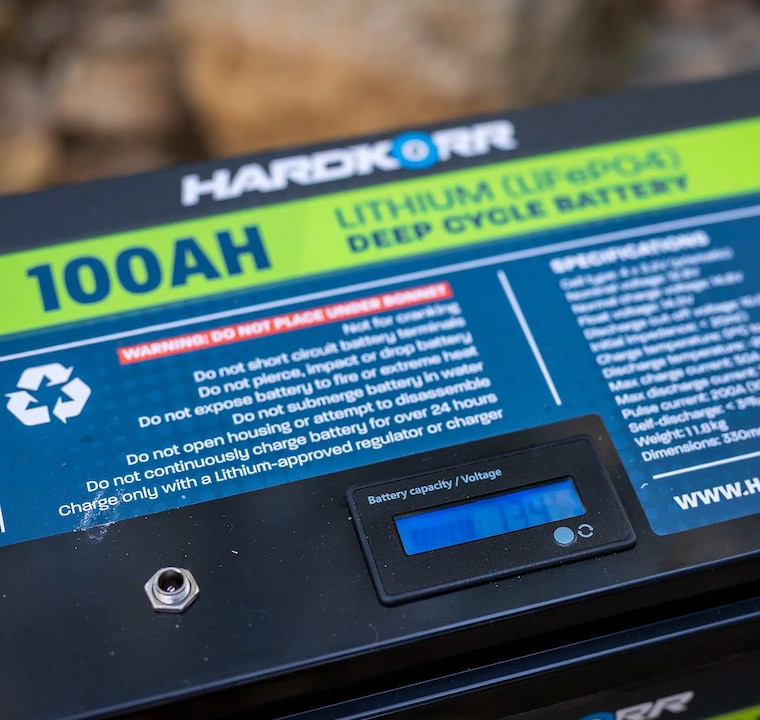
Let’s be honest: when it comes to solar-powered mobile and marine systems, the ability to efficiently store and discharge power is just as important as the ability to generate it. You can’t separate one from the other, which is why a high-discharge lithium deep cycle battery 12V/100Ah is the ideal starting point for building an efficient, scalable deep cycle storage solution that can keep your power going when you need it.
It’s important to remember that efficiency is the name of the game when it comes to deep cycle storage. By nature, every battery is an inherent power storage device; however, the sheer weight and volume of flooded lead, or sealed acid batteries that are needed to achieve the same level of storage efficiency that lithium ion deep cycle batteries have, makes them anything but optimal for storing or discharging power.
There’s no shortage of advantages for low-resistance lithium batteries when it comes to deep cycle storage, including:
- More usable capacity. Lithium battery cells are able to discharge up to 80% of their capacity with no negative impact, and up to 99% in emergencies.
- Faster charging. Recharging lithium batteries can be up to 4 times quicker than with other batteries, which means you’re less susceptible to changes in charging conditions.
- Less weight. Lithium cells typically weigh only half of what equivalent-rated lead-filled batteries weigh, and that makes a big difference for caravanners and ute owners.
- Longer life cycle. Lithium batteries are capable of >6000 charge cycles at a depth of discharge (DoD) of 80%. That’s up to 3 times as many cycles as any other type of deep cycle battery.
- Environmental Edge. Lithium batteries don’t contain any of the corrosive electrolytes or emit any of the poisonous gases that other batteries do.
In short, the high energy density level and Battery Management System (BMS) control options that are available with lithium deep cycle batteries makes them the superior choice for solar arrays and battery banks of all sizes. They also don’t require float maintenance once they’re fully charged, and can maintain their State of Charge (SoC) for months with only minimal self-discharge.
Choose Which Lithium-ion Cell is Right for You
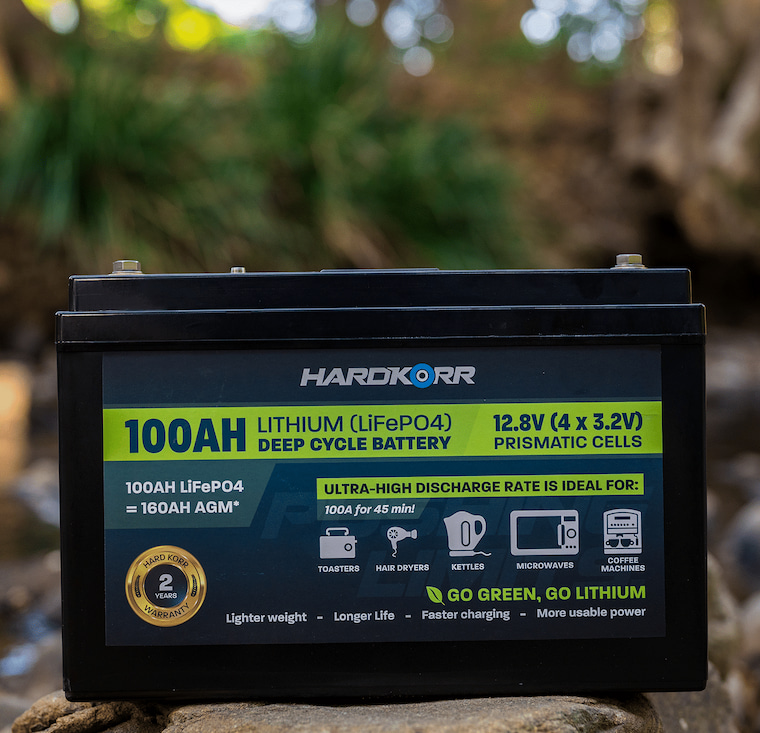
With their durable standard-sized ABS cases and IP64-rated protection against ingress, you can buy lithium deep cycle battery cells with the following capacities (Ah) at C20, and maximum discharge currents:
- 100Ah (5A x 20hrs), with a max constant discharge of 100A;
- 135Ah (6.75A x 20hrs), with a max constant discharge of 135A;
- 200Ah (10A x 20hrs), with a max constant discharge of 200A; and,
- 240Ah (12A x 20hrs), with a max constant discharge of 200A.
When deployed in banks, you can connect as many as 6 lithium deep cycle battery cells in series (end to end) or parallel (cross-connected) circuits. And if your banks are wired in parallel, the maximum discharge current is multiplied by the number of batteries that are wired together, placing even more dischargeable amperage at your disposal.
Optional Bluetooth monitoring is available on 135Ah and 240Ah lithium deep cycle batteries for sale as well. With access to a complete range of battery bank performance data directly from any Android or IOS-equipped smart device, you have instant visibility at any time to a full selection of battery storage metrics, including:
- Present state of charge and system status;
- System voltage and available capacity (Ah); and,
- Individual statuses of all cells in the system.
Cold Climate Lithium Batteries That Won’t Let You Down
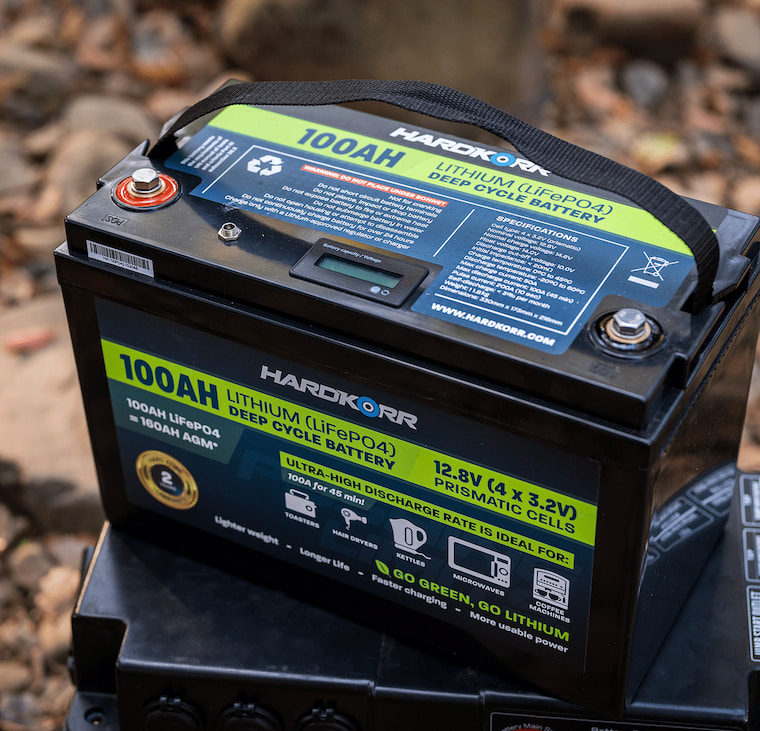
With their ordinary charge temperature range of 0°C to 55°C, high-quality 12-volt lithium battery deep cycle cells are designed to tolerate extreme environments. However, if you anticipate spending prolonged periods with your battery system in locations where sub-zero ambient temperatures are commonplace, you can also buy the toughest cold climate lithium deep cycle batteries Australia has to offer in the following capacities:
- 135Ah (6.75A x 20hrs), with a max constant discharge of 135A; and,
- 240Ah (12A x 20hrs), with a max constant discharge of 200A.
These batteries contain a BMS-controlled heating film that detects whenever ambient temperatures drop below 0°C, and automatically maintains an optimal temperature for the cells to charge at. Even if the ambient temperature drops to -20°C, these batteries will still charge as efficiently as they ordinarily would.
Lithium Cells Give You Maximum Output With Minimum Maintenance
Although a lithium deep cycle 12V battery array is easier to manage and markedly more efficient than other types of deep cycle systems, there are still some basic precautions you need to take to get the best possible use out of them.
- Avoid over-discharging. Lithium batteries are much more tolerant of heavy discharging than other types, but to get the most use out of them, you want to avoid going beyond their discharge limit.
- Pay attention to your charging program. Lithium batteries have a unique charging program, and you always want to be sure that your system’s charge controller is set to the correct program to avoid damaging your batteries.
- Mind your temperatures. While lithium cells can tolerate long periods of storage with a self-discharge rate of <3% per month, they fare better when storage temperatures remain within 0°C to 45°C.
Quite simply, beyond setting them up and ensuring that they’re equalized, lithium ion deep cycle battery cells and arrays don’t require a great deal of maintenance.
The Final Word
At the end of the day, there’s really no question about why solar users prefer lithium-ion batteries for deep cycle systems. They’re superior in every way to any other type of commercially available battery, allowing you to dependably have more power available without changing the size of your array.
If you’re thinking about upgrading the power storage system in your RV, caravan, or boat to one that’s more efficient, investing in a high-discharge lithium deep cycle battery 12V / 100Ah is an excellent starting point. Lithium-ion batteries may cost a little extra upfront, but you may never need to buy batteries for your charging system ever again.


